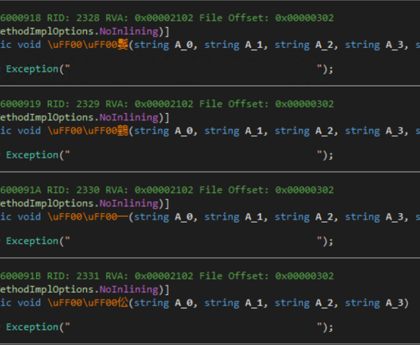Consumers are increasingly discerning about the products they bring into their homes. This is particularly true with the Internet of Things (IoT): electronics like smart thermostats, connected security systems, and voice-activated assistants. However, for all the convenience these products bring, they resulted in a staggering 1.5 billion attacks on IoT devices in the first half of 2021 alone, according to cybersecurity firm Kaspersky.
Consumers are rightfully concerned about product security. For businesses, the stakes are high too; a single security breach can lead to financial losses, damage to brand reputation, and even legal consequences under stringent data protection laws like the EU’s General Data Protection Regulation.
Explore the importance of product security for businesses and the best practices for creating secure, trustworthy products.
What is product security?
Product security encompasses the practices, processes, and technologies safeguarding embedded devices and their associated software components from security risks throughout their entire product lifecycle. It ensures that physical products—like medical devices and smart home appliances—are resilient against cyberattacks, physical breaches, and data theft. The goal is to create secure products that protect user data, maintain operational integrity, and comply with industry regulations.
Product security vs. application security: What’s the difference?
Product security focuses on fortifying physical devices by securing hardware elements, firmware, and device-specific software against cyber and physical threats. A product security team ensures that devices like smart appliances are tamper-resistant, have secure boot processes, and maintain data integrity throughout their operational life.
By contrast, application security (or “AppSec”) deals exclusively with softwaresecurity. Softwaresecurity teams focus on secure coding practices, vulnerability assessments as part of the software development process, and security testing for standalone applications like web, mobile, or desktop apps. Unlike product security, AppSec doesn’t deal with hardware vulnerabilities but protects the application’s code, data handling, and user interactions from software-based security risks.
Importance of product security
In our interconnected world, the security of your products is as crucial as their functionality and design. Here’s why investing in product security is vital for your business:
It protects customer data
When your connected devices collect and process customers’ data, they trust you to keep their information safe. A breach due to security vulnerabilities can lead to data theft, privacy violations, and identity fraud, shattering customer trust. By prioritizing product security, you demonstrate your commitment to customer privacy, ideally turning users into loyal brand ambassadors who value and promote your brand.
It safeguards your business reputation
With news of security breaches spreading globally in minutes, a single vulnerability can tarnish your business reputation for years. Negative publicity from hacked devices or compromised operational security can lead to customer churn, stock price drops, and partnership losses.
Conversely, a reputation for creating secure products can differentiate your brand, attracting security-conscious customers and potentially high-value B2B contracts.
It helps you avoid financial and legal repercussions
The cost of a security breach extends far beyond lost sales. Fines for non-compliance with data protection laws, lawsuits from affected customers, and expenses for breach remediation can hurt your business. By investing in product security to identify vulnerabilities early and often, you avoid these financial pitfalls and the costly process of retrofitting security into products after a breach.
It helps ensure product reliability and longevity
Unaddressed security vulnerabilities can lead to malfunctions, downtimes, or malicious actors hijacking your products. This is particularly critical in sectors like health care, automotive, or industrial control, where a security lapse can endanger lives. Robust product security ensures your devices operate as intended, improving product reliability, longevity, and your brand’s reputation for quality.
How to improve product security
- Implement a comprehensive vulnerability management program
- Adopt threat modeling early in the design phase
- Enforce secure development practices
- Implement strong authentication and authorization
- Plan for security incident response
Improving product security requires a holistic approach that addresses hardware, software, and process vulnerabilities. Here are five strategies for overcoming common security challenges and fortifying your products:
1. Implement a comprehensive vulnerability management program
The sheer volume of components in modern products—from firmware to application programming interfaces (APIs)—makes it difficult to identify all potential vulnerabilities through manual testing.
Instead, implement regular vulnerability scanning and penetration testing using automated tools that scan your entire product stack—like Rapid7 Nexpose, ZAP, and Nessus Vulnerability Scanner. Prioritize findings based on risk, and establish a vulnerability management process that tracks, assigns, and verifies fixes. This proactive approach helps you stay ahead of attackers probing for weaknesses.
2. Adopt threat modeling early in the design phase
Traditional security testing can come too late, making flaws expensive to fix. Additionally, getting non-security experts like designers and product managers to engage in threat modeling can be difficult.
Start threat modeling early by diagramming your product’s data flows and trust boundaries. Use frameworks like STRIDE (spoofing, tampering, repudiation, information disclosure, denial of service, elevation of privilege) to brainstorm potential attacks. Engage team members by using visual tools and exploring tenets of chaos engineering like a collaborative “attack your own product” session.
3. Enforce secure development practices
Development teams can resist security measures, viewing them as obstacles to rapid development. This can lead to the release of products with critical vulnerabilities.
Integrate security into every phase of your development lifecycle using frameworks like Microsoft’s SDL or OWASP SAMM. Include practices like code reviews for security flaws, using pre-approved secure libraries, and static code analysis. Showcase how secure development practices save time over fixing data breaches post-launch.
This general principle of developing products with security in mind can apply to non-technological products, too. Gloria Hwang started Thousand, a bike helmet company, with the goal of saving 1,000 lives through productive wear. For many, including herself, the aesthetics of current helmets on the market dissuade people from wearing them. She set out to change this.
“For convenience, we have our PopLock, an anti-theft feature that allows you to lock up your helmet and leave it,” Gloria says on an episode of the Shopify Masters podcast. “We’ve got MIPS technology in some of our products. For us, it’s about designing around tenets of safety, style, and convenience.”
4. Implement strong authentication and authorization
Weak access controls, especially default or hardcoded passwords in IoT security, are prime targets for attackers. However, strengthening security often can come at the cost of user experience.
Mandate strong, unique passwords or implement multifactor authentication. Design authorization schemes using the principle of least privilege, meaning give users only the minimum permissions they need to perform their tasks and nothing more. To balance security with usability, use technologies like secure biometrics (such as fingerprint recognition or facial recognition) that boost security without complicating the user journey.
5. Plan for security incident response
Unfortunately, no security product is impenetrable. For product manufacturers—particularly those who make industrial equipment—providing quick patches without disrupting operations can be a major hurdle.
To avoid being caught flat-footed, develop a robust securityincident response plan covering detection, containment, eradication, and recovery. Design products with secure, remote update capabilities to speed up the patching process. Also, consider running regular drills to test and improve your response times. Prepare clear communication protocols to notify customers promptly and help your company meet ethical obligations and regulatory mandates.
Product security FAQ
What is product security vs. application security?
Product security focuses on protecting physical devices and their embeddedsoftware throughout their lifecycle, while application security deals exclusively with securing standalone software applications like web or mobile apps.
How do you ensure product security?
Ensure product security by implementing a comprehensive vulnerability management program, adopting early threat modeling, enforcing secure development practices, implementing strong authentication and authorization, and planning for security incident response.
Why is product security important?
Product security is important because it protects customer data and trust, safeguards your business reputation, avoids financial and legal repercussions from breaches, and ensures the reliability and longevity of your products.
This post was originally published on the 3rd party site mentioned in the title of this this site






